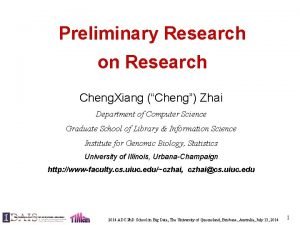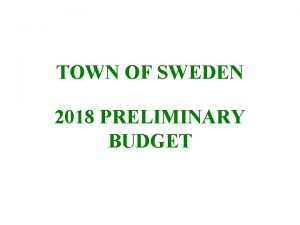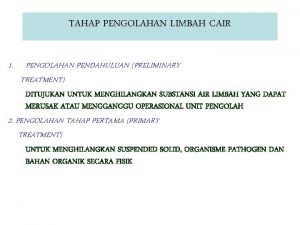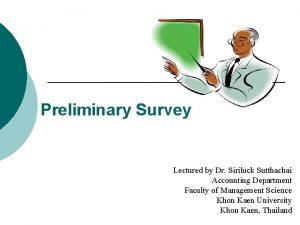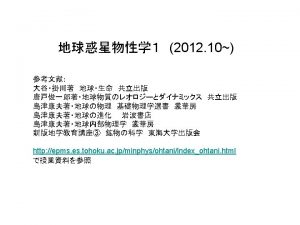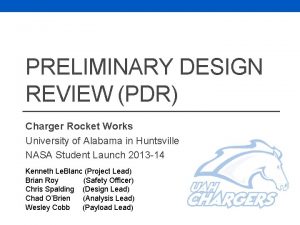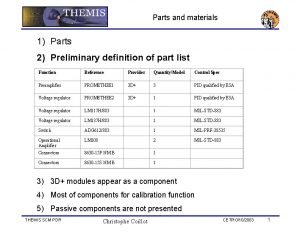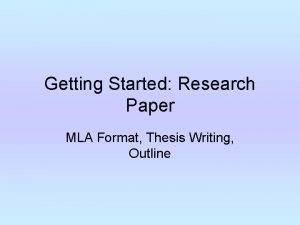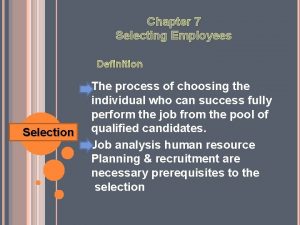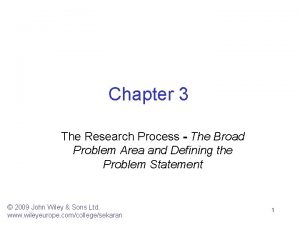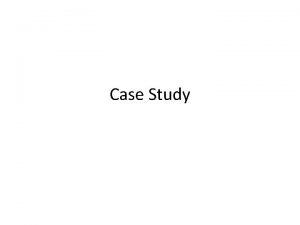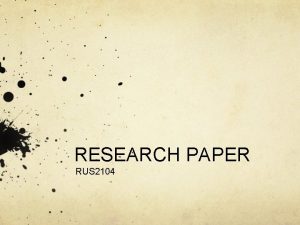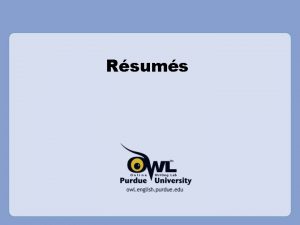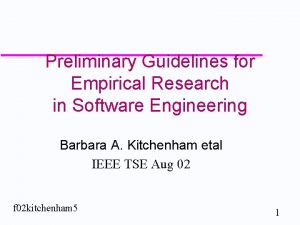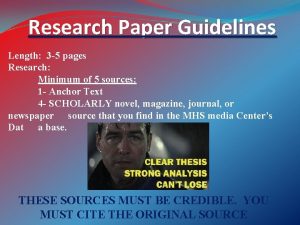RESEARCH PAPER 101 PRELIMINARY GUIDELINES RESEARCH PAPER 101










- Slides: 10

RESEARCH PAPER 101 PRELIMINARY GUIDELINES

RESEARCH PAPER 101 • A good paper indicates: • Use of seminary level books & articles (SFBC&TS library; jstor; NTGateway. com) • Relevance & specificity of the topic • Recognized scholars, professors, experts in their field • Writing style with clear sentences & logical progression • Fair presentation of various views on the topic by experts in the field • Provide evidence (not opinions) for each point (biblical & otherwise)

RESEARCH PAPER 101 • Use academic writing style: • Turabian style (biblical studies, pastoral, business) • Ideas need to be clearly referenced (author, book, page number etc. ) • Bibliography properly formatted • Plagiarism results in automatic “F” – plagiarism is… • Not using references • Using quotes or ideas without references • Paper, sentence, paragraphs have been copied from book, internet or other source

RESEARCH PAPER 101 • Examples of plagiarism*: • There are many forms of academic dishonesty, including plagiarism, or the representation of another person's words, ideas, or information as if they were your own. You may use another person's words, ideas, or information, but to do so without acknowledgment is plagiarism. Perhaps the most serious form of plagiarism is failure to acknowledge the source of a direct quotation or paraphrase. Whether accidental or deliberate, failure to acknowledge that you have borrowed another's language, ideas, or information constitutes plagiarism. • Understanding the most common forms of plagiarism will help you avoid them. Follow the links below to learn more about each type and how to avoid committing them. • Example 1. Direct Plagiarism • Word for word borrowing from an unacknowledged source, whether intentional or not. • Example 2. Mosaic Plagiarism • Mosaic plagiarism occurs when a writer reuses a mix of word, phrases, and ideas from a source without indicating which words and ideas have been borrowed and/or without properly citing the source.

THIS IS PLAGIARISM = “F” +ACADEMIC DISCIPLINE MOSAIC PLAGIARISM EXAMPLE Problem? Student has included a verbatim passage from his/her source and has STUDENT A WROTE: * SOURCE: failed to indicate it's a direct quotation Long ago, when there was no written "In ages which have no record these islands were the history, these islands were the home of millions of happy birds, the resort of a hundred times more millions of fishes, of sea lions, millions of happy birds; the resort of a and other creatures whose names are not so common; hundred times more millions of fishes, sea the marine residence, in fact, of innumerable creatures lions, and other creatures. Here predestined from the creation of the world to lay up a lived innumerable creatures predestined from store of wealth for the British farmer, and a store of the creation of the world to lay up a store of quite another sort for an immaculate Republican government. "1 wealth for the British farmer, and a store of 1 A. J. Duffield, The Prospects of Peru (London: quite another sort for an immaculate Newman, 1881) 78. Republican government. More examples of plagiarism: https: //www. princeton. edu/pr/pub/integrity/pages/plagiaris m/

RESEARCH PAPER 101 • If this is first time writing an academic paper: • Ask help from peers • Consult Turabian “Writing Manual” • Concentrate on getting the basics right

RESEARCH PAPER 101 • Basic info about Turabian writing style may be found: • http: //library. duke. edu/research/citing/ • Attend writing seminar - ask details from Dr. Tommy Drabik & take CED 612 • Find quality books & articles from SFBC library • Ask librarian for help • NT articles/books on jstor. org • http: //www. ntgateway. com/ & http: //thegospelcoalition. org/themelios

Important! RESEARCH PAPER 101 • Don’t -- • Use extensive Bible quotes – summarize or paraphrase w/ reference (e. g. Matt 1: 21) • Give testimonies or personal experiences unless directly relevant (and very short) • Preach or teach • Do -- • Apply the information in these slides • Ask professor for help/questions

RESEARCH PAPER 101 • Before handing in… • Read your paper out loud to yourself • Are you clear, concise, consistent & come to appropriate conclusions • Have a friend proof read & critique (feedback) your paper • Grammar & argumentation, sources, format, clarity, consistency… • Research paper links for further help: • https: //www. esc. edu/online-writing-center/resources/research-papersteps/ https: //www. csuchico. edu/egsc/documents/how_to_write_research_paper. pdf

SAMPLE GRADING RUBRIC THE 511 Grading Rubric Composition (15 p) Information logically and coherently organized between sentences, paragraphs, and sections. Academic Writing Use of references, footnotes per Turabian style; style (Turabian) use of appropriate grammar and vocabulary (15 p) Exegesis of the Analysis of the primary text (e. g. Matt 5: 3 -8) in primary text (25 p) its historical and literary context; focus on the individual parts of the text and the text as a whole; deriving accurate and relevant meaning from the text Connecting Exegesis to the rest of the NT (25 p) Synthesis and application (20 p) Connection of exegetical analysis to the relevant data in the rest of the New Testament (and OT if applicable) Bringing all the relevant data together and drawing appropriate theological conclusions from it Max. 100 pts.
